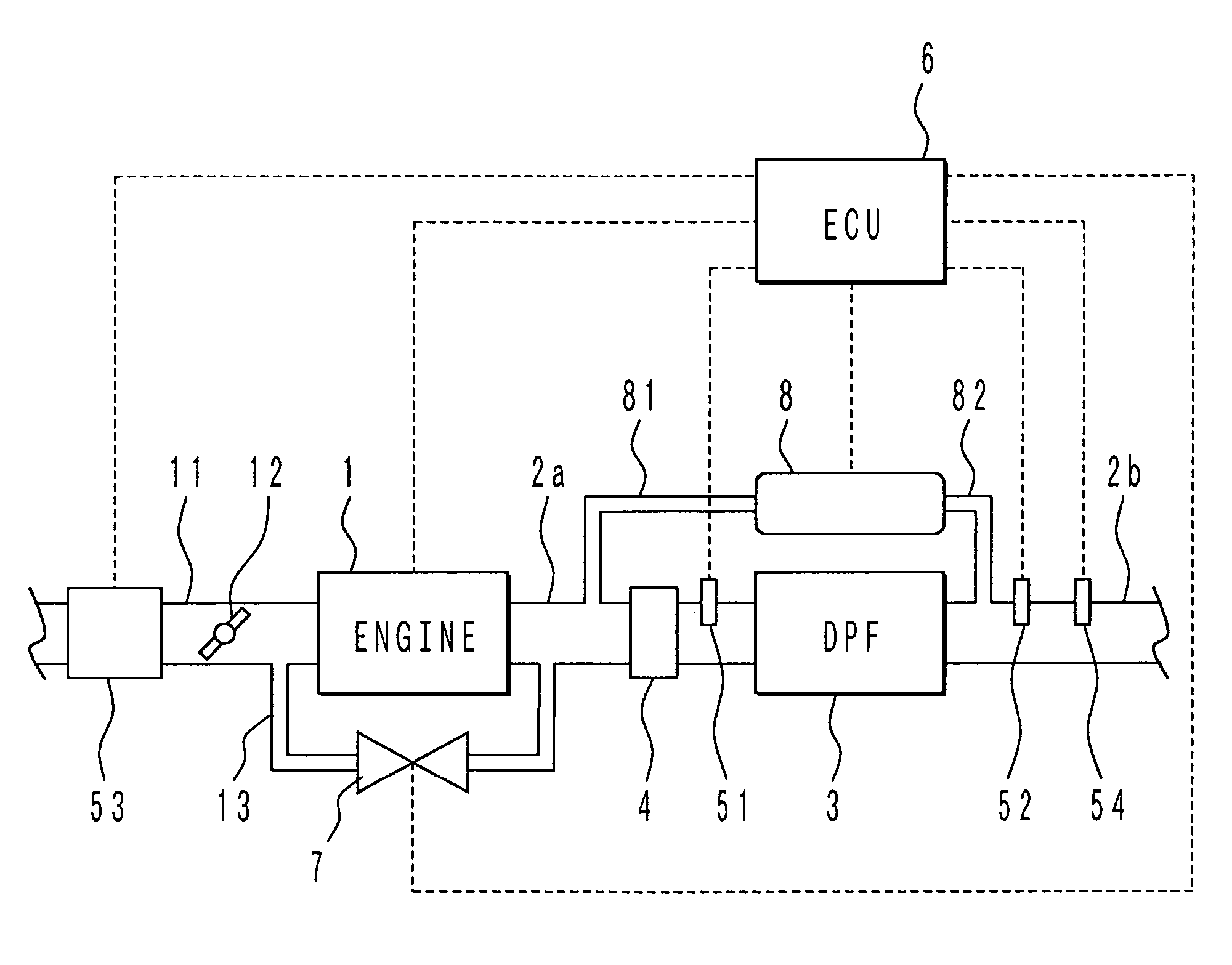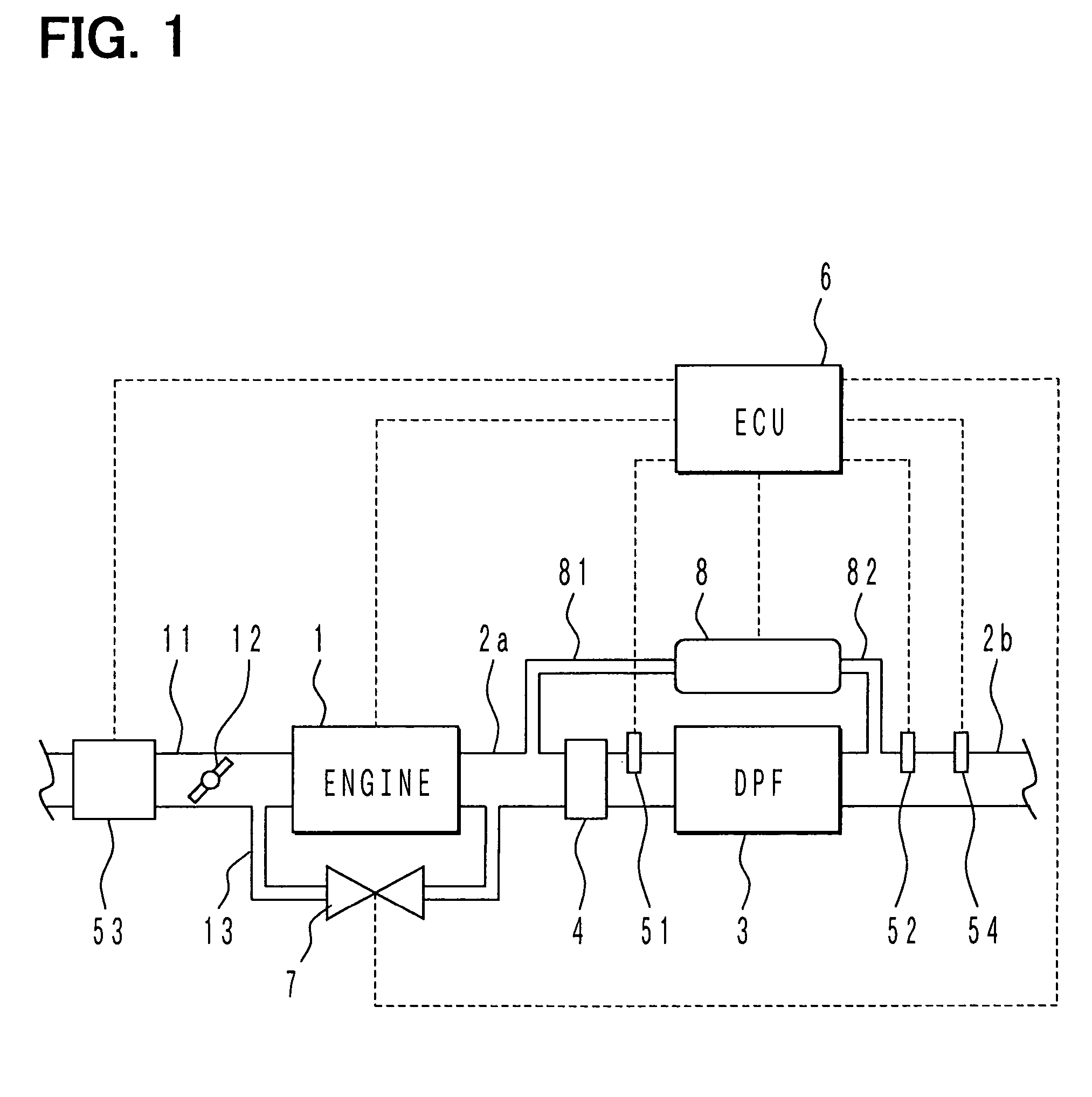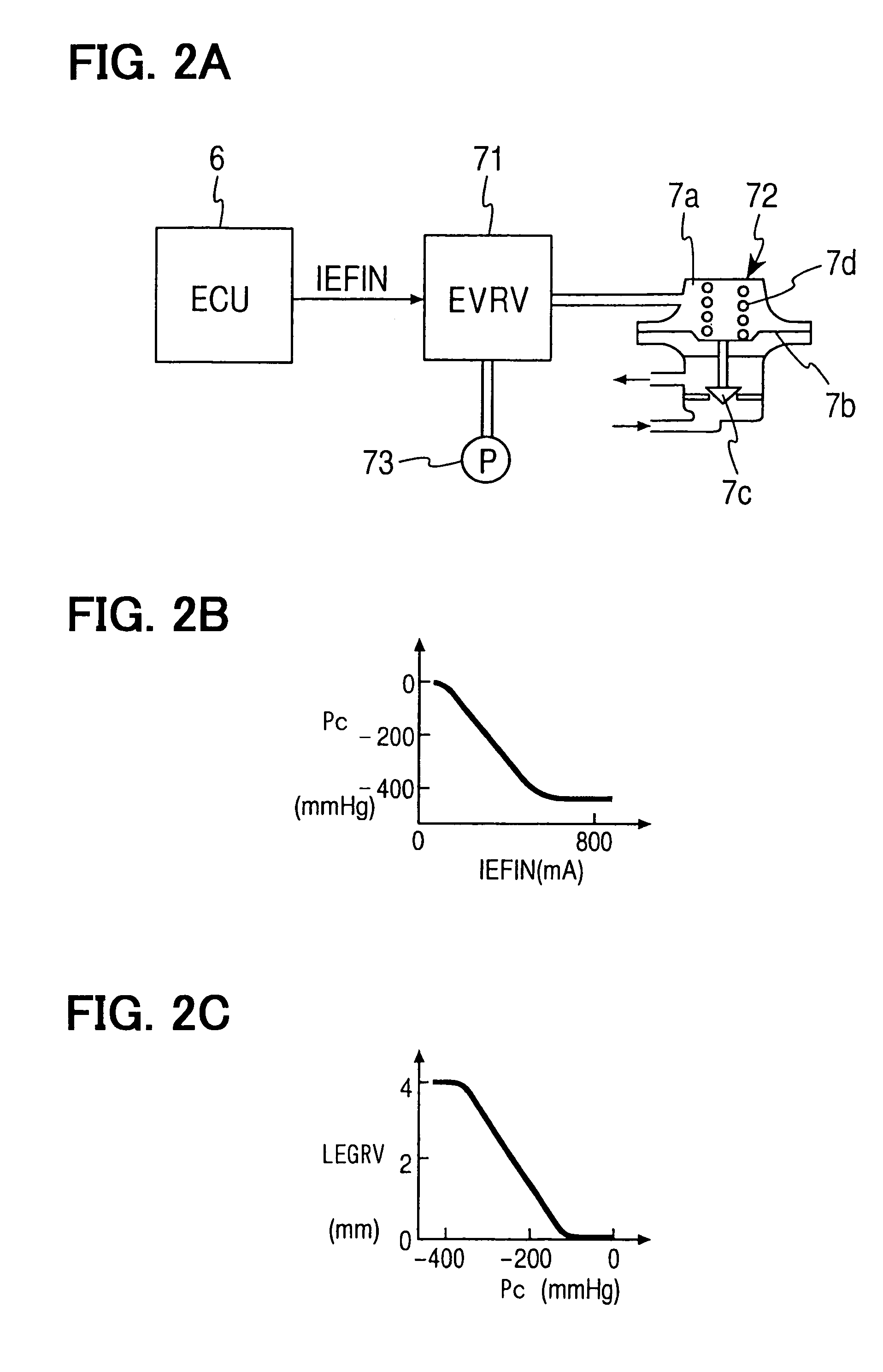Exhaust gas purification system of internal combustion engine
a technology of exhaust gas purification system and internal combustion engine, which is applied in the direction of exhaust treatment electric control, electrical control, separation process, etc., can solve the problems of deterioration in fuel cost accompanies the above temperature-increasing means, rapid increase of dpf temperature, and rapid combustion of particulate matter, so as to reduce the flow rate of exhaust gas, inhibit the deterioration of fuel cost, and improve the effect of temperature-in
- Summary
- Abstract
- Description
- Claims
- Application Information
AI Technical Summary
Benefits of technology
Problems solved by technology
Method used
Image
Examples
Embodiment Construction
[0046]Referring to FIG. 1, an exhaust gas purification system of a diesel engine 1 according to an embodiment of the present invention is illustrated.
[0047]A diesel particulate filter (DPF) 3 is disposed between exhaust pipes 2a, 2b, which constitute an exhaust passage 2 of the diesel engine 1. A diesel oxidation catalyst (DOC) 4 is disposed in the exhaust pipe 2a upstream of the DPF 3. The DPF 3 is a ceramic filter having a publicly known structure. For instance, the DPF 3 is made of heat-resistant ceramics such as cordierite and is formed in the shape of a honeycomb structure. An end of each one of multiple cells of the honeycomb structure as gas passages is blocked alternately on an inlet side or on an outlet side of the honeycomb structure. Exhaust gas discharged from the engine 1 flows downstream while passing through porous partition walls of the DPF 3. Meanwhile, particulate matters contained in the exhaust gas are collected in the DPF 3 and gradually deposited in the DPF 3.
[...
PUM
| Property | Measurement | Unit |
|---|---|---|
| temperature | aaaaa | aaaaa |
| temperature | aaaaa | aaaaa |
| temperature | aaaaa | aaaaa |
Abstract
Description
Claims
Application Information
 Login to View More
Login to View More - R&D
- Intellectual Property
- Life Sciences
- Materials
- Tech Scout
- Unparalleled Data Quality
- Higher Quality Content
- 60% Fewer Hallucinations
Browse by: Latest US Patents, China's latest patents, Technical Efficacy Thesaurus, Application Domain, Technology Topic, Popular Technical Reports.
© 2025 PatSnap. All rights reserved.Legal|Privacy policy|Modern Slavery Act Transparency Statement|Sitemap|About US| Contact US: help@patsnap.com



